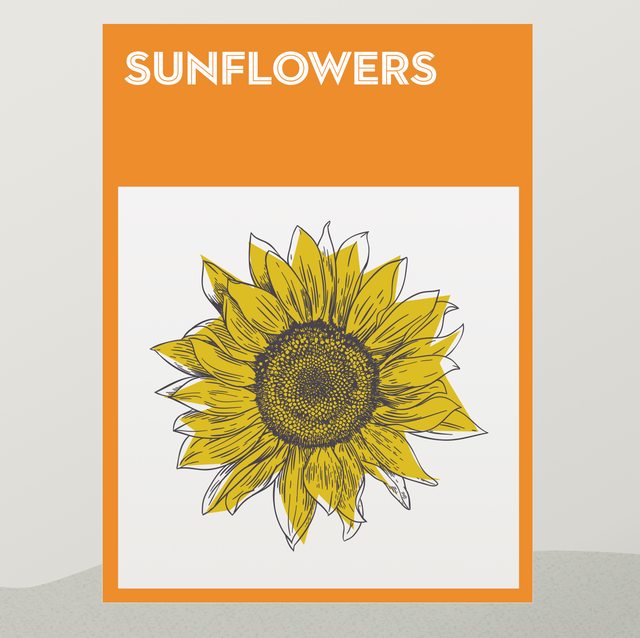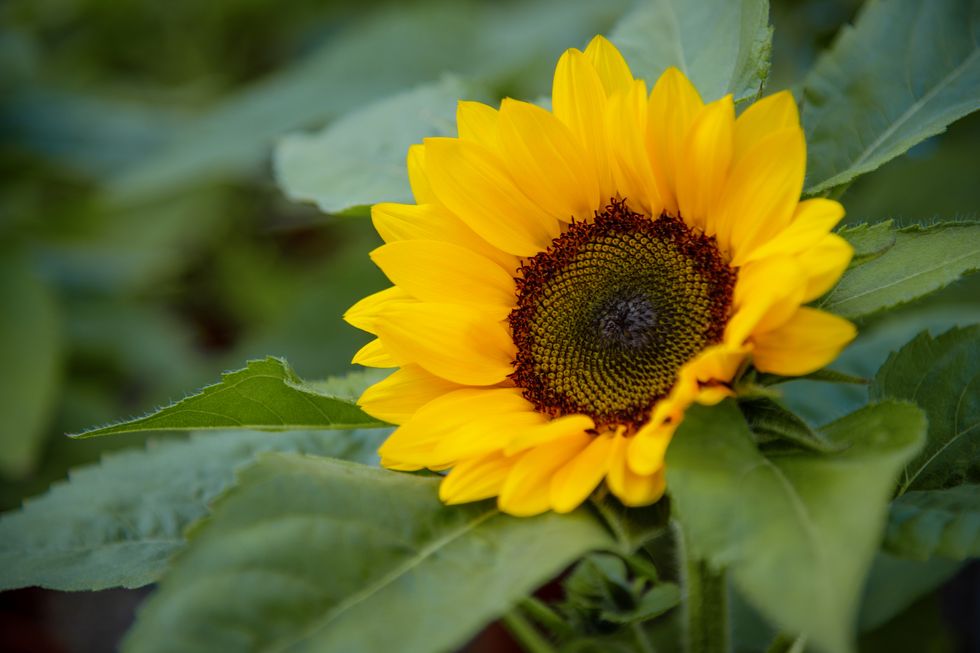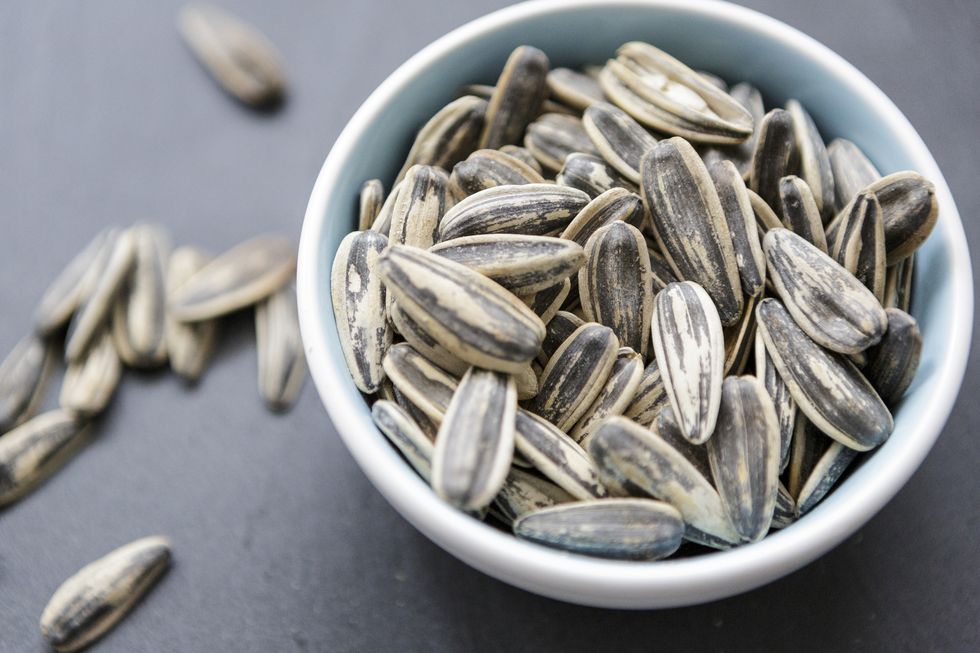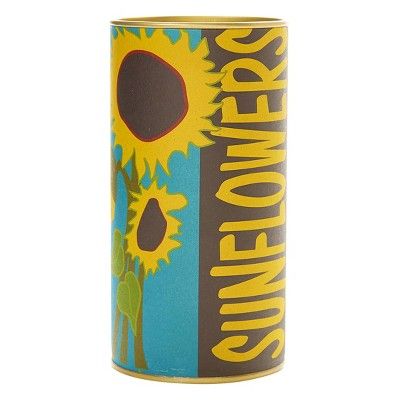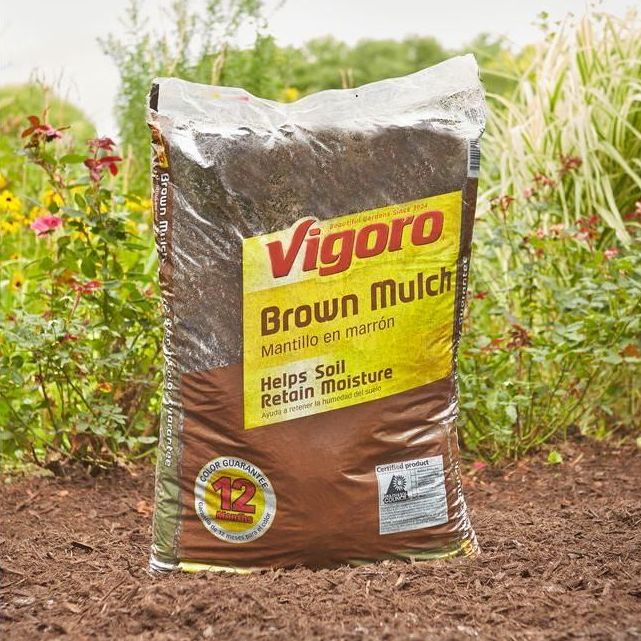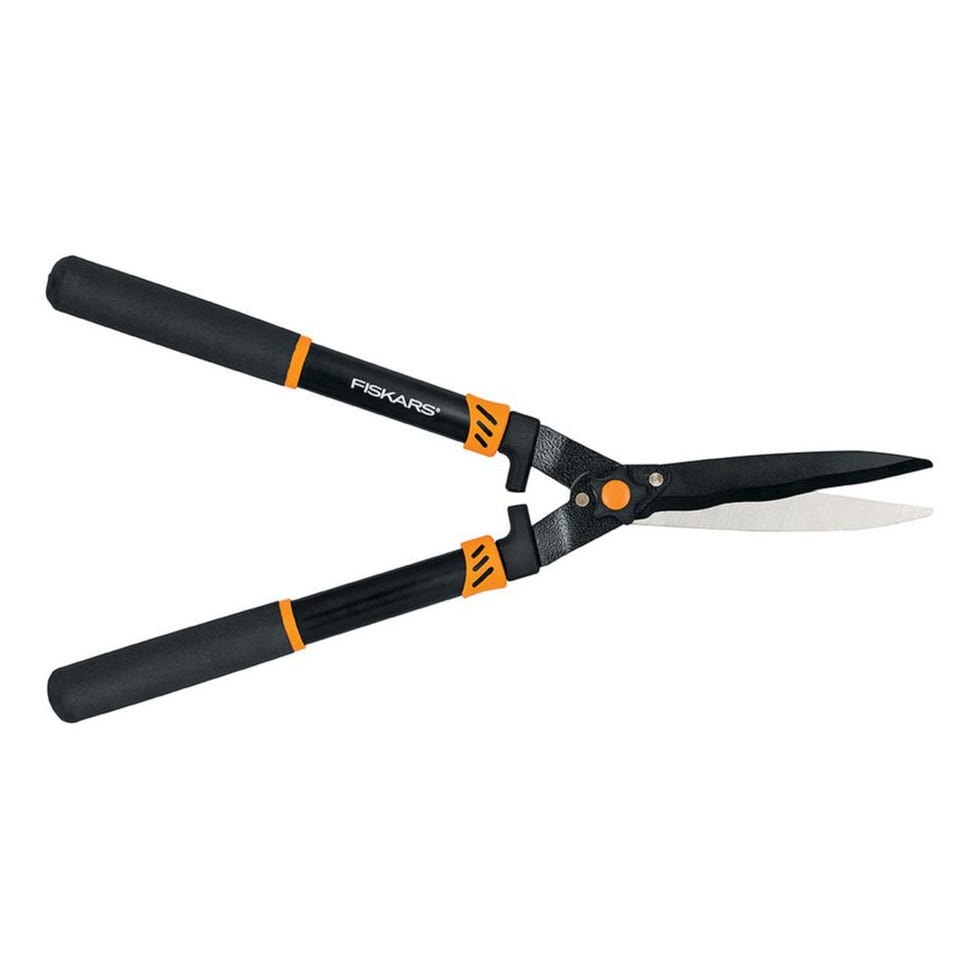Sunflowers come in a wide assortment of sizes. Some cultivars grow as tall as 15 feet with flower heads as wide as 1 foot across; dwarf types, however, measure only only a foot or two tall. There are also early, medium-height sunflowers that stand 5 to 8 feet tall with heads that 8 to 10 inches across. Some cultivars produce a single large flower; others form several heads.
And let's not forget about their seeds. Sunflower seeds can enhance everything from baked goods and granola to salads and pesto, plus they even feed animals and birds. Sunflower oil, which is known for its skin benefits, can even be found in many beauty products and soaps. And when it comes to the garden, you can consider sunflowers for aesthetic purposes, but they can also act as windbreaks, privacy screens, or living supports for pole beans.
Here are our best tips to grow your healthiest sunflowers yet this year.
Be sure to plant them in full sun.
If possible, choose a site in full sun on the north side of the garden so the tall plants won't shade your other vegetables once they're grown. Sunflowers aren't fussy about soil so you don't need to worry too much about soil varieties.
Sunflower seedlings are cold-resistant, so short-season growers may want to get a head start by starting seeds several weeks before the last frost. In most areas, though, it's best to wait until the soil is warmer — around the last frost date.
If you're sowing seeds directly, you can sow most sunflower seeds 1 inch deep and 6 inches apart. You can move large types to 1.5 feet apart and dwarf or medium-sized cultivars to 1 foot apart. Water well after planting.
Add a layer of mulch.
Apply a 3 to 4 inch layer of mulch to conserve moisture and keep down weeds. Sunflowers are drought-resistant, but they'll grow better if you water them regularly from the time the flowers begin to develop until they're mature.
Be attentive.
Sunflowers are remarkably trouble-free, but there are a few issues to watch for. You should rotate your crop if verticillium — a soil fungus that produces dead areas along leaf veins — becomes a problem.
To protect seeds from birds, you can cover flowers with mesh bags, cheesecloth, old pantyhose, or perforated plastic bags. An early autumn may interfere with pollination and cause the plant to form empty seeds, but you can avoid this problem by planting earlier the following year.
Harvest sunflowers at the right time.
Harvest the seeds as soon as they start to turn brown, or the backs of the seed heads turn yellow. You can tell because the heads usually begin to droop when they're ready for harvesting.
Cut your sunflowers along with several inches of stem. You can gift them or use them to brighten your kitchen table or office.
To dry them out for animal fodder, hang upside down in a dry, well-ventilated place — such as a garage or attic — until fully dry. You can then store them in plastic bags or glass jars for birds and animal food.
Try roasting your seeds.
To cook your sunflower seeds, soak them overnight in water (or strong salt water, if a salty flavor is desired), drain, and spread them on a shallow baking sheet. Roast for 3 hours at 200 degrees Fahrenheit or until crisp.
